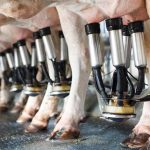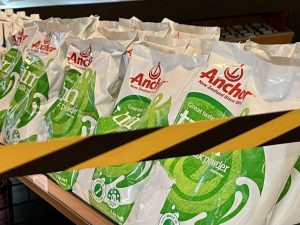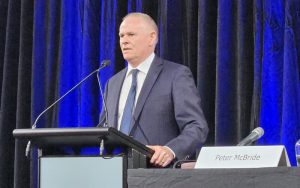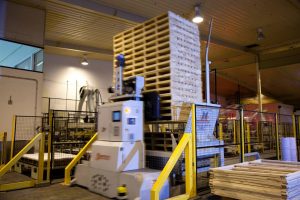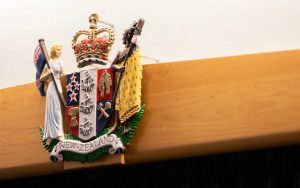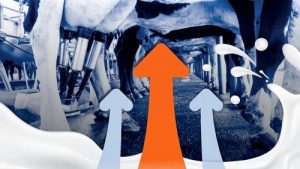
Culverden farmer Emlyn Francis likes to call the GPS-controlled collars on his dairy cows the way of the future.
As he strolls towards a collar-wearing mob lounging around a water tank, he points to distant fence lines.
They’ve been made nearly redundant by the virtual technology, which is being taken up by a small, but growing group of farmers throughout the country.
The cows graze happily in their pinpointed area with borders invisible to the eye.
For someone who grew up in the days when the only chips in a car were scattered on the back seat, Mr Francis finds this fascinating.
He and wife Hilary put the solar-powered Halter smart collars on 250 of their winter milking cows in June, and by the end of the month had them on the entire dairy herd of just under 1500 cows.
High on the list of taking up the technology was keeping good staff.
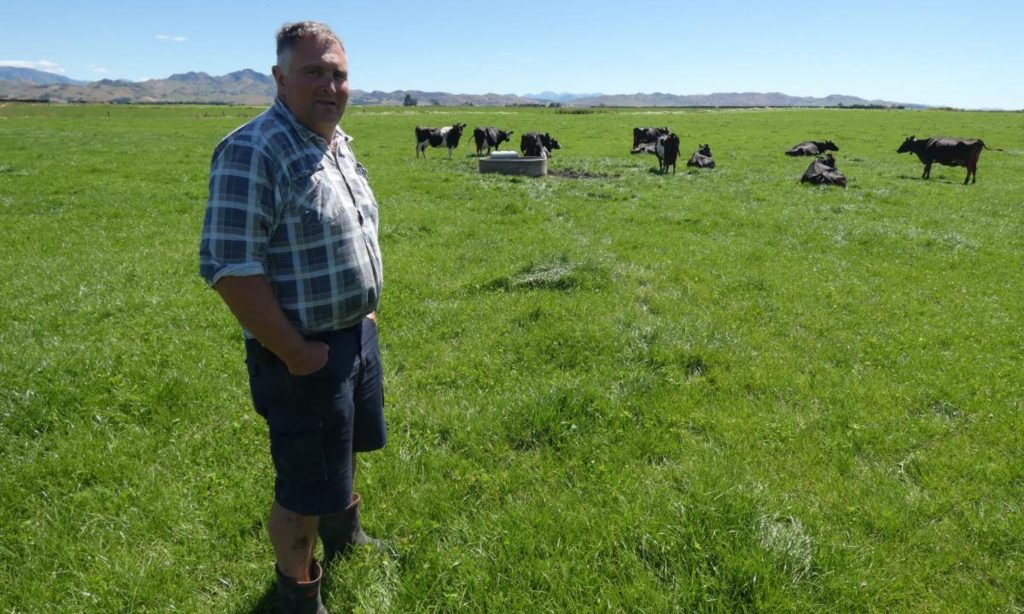
Source: Otago Daily Times
“While I’m a sucker for a glossy brochure I also see the benefits of labour efficiencies and staff engagement,” he said.
“Younger people are pretty good on their phones and so if they’re on their phones and can shift the cows or get the cows in or do the farm work, whatever, then that’s gold. Since we’ve got Halter they’re all really engaged with it.”
The New Zealand tech company developed the collars with a simple app that helps farmers guide cows without fences, wires, motorbikes, gates or dogs.
A noise signals to each cow when it approaches or crosses over a virtual fence, with a vibration indicating it is on the right path. Should a cow detour, then the collar delivers a “low-energy pulse” in technology approved by the AgResearch Animal Ethics Committee.
The Francis’ found after day two their herd was trained in recognising the virtual fences.
Lessons were learned quickly when human error crept in and someone put a collar on upside-down.
“When you put them on they have to be on the right way, because the idea is if they turn left it makes a noise, or a vibration or a zap, and if you have it on the wrong way she’s being told to go left rather than right, and it really messes with them.
“One would go the wrong way and couldn’t understand.”
He had even heard of clever cows learning to back through a feed break to get to a juicy morsel, but for the most part it had worked well and helped their business.
The system automates cow movements, and monitors daily grazing so farmers can keep track and adjust their feed. Advanced heat detection and health alerts are delivered to help lift their in-calf rates.
Mr Francis liked the thought that he could sit in the kitchen and track their herd on his smart phone.
Friends came around the other day for coffee and watched as they sat around the table and shifted the cows remotely by drawing a picture on the phone.
A quick swipe accesses an app, with little white circles signalling each cow in every mapped out paddock. Another click of the button reveals their details.
“So that cow there,” he said, pointing to a circle, “is number 1344. She was mated last on December 8, she’s ruminating, up a wee bit today, moving down a wee bit today but it’s early in the day and we can see that in the graph of her movement and graph of her grazing. It doesn’t have feed intake, but rumination can be used for a proxy for intake.
“I haven’t done it but I’d like to get a mob of high average rumination and try to feed them more, because if they’re ruminating more they’re probably eating more, and it would be good to use that to get the super tankers together.”
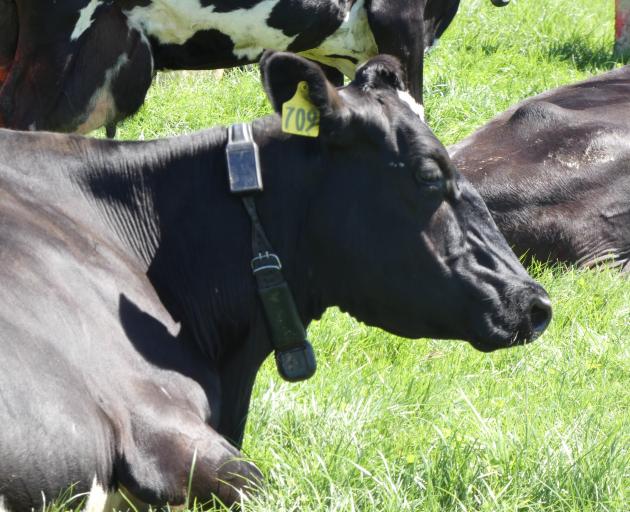
The couple also liked that Halter was a New Zealand company with local people on the ground who could be contacted should problems arise.
Mrs Francis said they were initially curious about the Allflex collars for heat detection and health, but then started looking more widely.
“Initially we were looking at the other collars,” she said.
“So while we were doing that, we thought ‘why not take a look at the Halter collar, just see what it’s all about’, not really thinking we would sign up.”
The benefits of virtually moving cows and virtual fencing swung them over.
Mr Francis said they were using a significantly less amount of fuel from fewer motorbike movements because the “guys aren’t sitting behind cows”.
He estimated this could amount to about 1000 hours of saved travel a year from removing three hours daily just to get the cows in.
“We need to get better productivity, we need to get a better six week in-calf rate, to have less wastage and all these other things. So the savings itself won’t pay for it, and you need incremental improvements and productivity to make it work.”
Trying to get a large herd in calf is a challenge and, even with a heat detection camera, time was still being spent observing cows. They thought something to automate that would work better.
The Halter app collects a cow’s movements, and a telltale sign was if it was on heat it was probably eating less, moving more and had a faster pulse.
“The algorithms and AI build up a picture of normal pattern of movement,” Mr Francis said.
“So every three weeks when she’s on heat that will change, and there will be a spike in these various things and that gives you a number and tells you she’s armed and dangerous.”
Initially, they had to put the heat numbers manually into Protrack, but a bonus is that Halter had done a deal with LIC, so the mating information can be linked to the farm automation software.
While it was hard to quantify, Mr Francis was convinced they grew more grass during spring because every pasture break was back-fenced and the herd was only eating where it was supposed to be.
“It’s early days and irrigation is on restrictions off and on now, but we are on target to do better per cow. As long as we can hold it together from here on out we should be right and should do 25kg-30kg of milk more than last year per cow, which are incremental improvements.
“That helps out our environmental footprint because we have less cows. We already have 100 less cows than last year and are 2% ahead.”
A further pay-off has come with reduced labour hours.
Mrs Francis said their staff probably worked 45 hours a week during spring compared with 50 hours normally in peak milking, and were now doing 40 hours.
They got to see more of their friends and family, and were happier people, she said.
With any new addition to a farm, there are pros and cons.
The challenge of cutting their team from nine staff to seven in the busy summer period is those left will probably do more milking. The flipside of fewer cows and less manual movements is the staff are getting up an hour later in the mornings.
The only stock without collars on their Kenmare Dairy farm are 20 beef animals, left to roam as lawn mowers.
Kenmare is in the heart of the Amuri Basin, which has become deep dairy country over the past few decades since the advent of modern irrigation.
Mrs Francis’ father started the original Kenmare farm in 1995 on part of the since-expanded property, now numbering 630ha.
